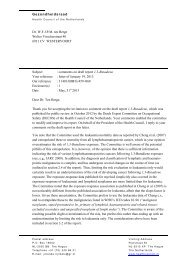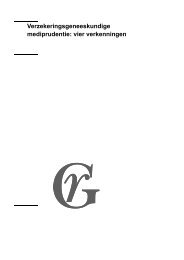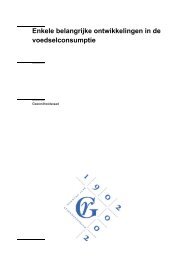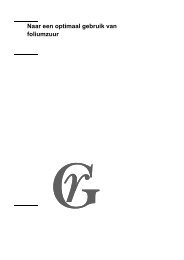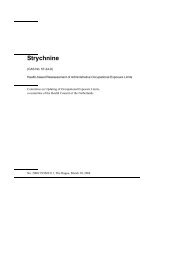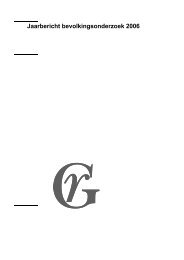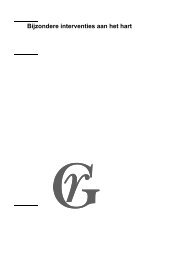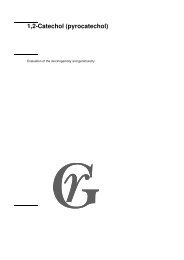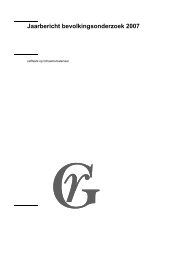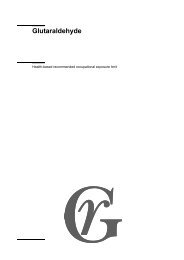Liquefied petroleum gas (LPG) - Gezondheidsraad
Liquefied petroleum gas (LPG) - Gezondheidsraad
Liquefied petroleum gas (LPG) - Gezondheidsraad
You also want an ePaper? Increase the reach of your titles
YUMPU automatically turns print PDFs into web optimized ePapers that Google loves.
irth to a child that died after 11 hours with severe encephalomalacia and<br />
hypoplastic kidneys (Gos82). In both cases, these brain effects were not<br />
considered to be a butane-specific effect but to have been caused by intrauterine<br />
anoxia. In neither of these cases, estimations of the concentrations inhaled were<br />
made.<br />
Viau et al. did not find clinically significant effects on sensitive biochemical<br />
and immunological markers of kidney (functioning) in 53 male refinery workers<br />
who were occupationally exposed for an average of 11 years to a number of<br />
hydrocarbons, among which butane (concentration ranged from 0.4 to 17.8<br />
mg/m 3 ) (Via87).<br />
In human subjects exposed to a butane concentration of 10,000 ppm (24,200<br />
mg/m 3 ) for 10 minutes, drowsiness was reported (no more data presented)<br />
(Low87b, Moo82).<br />
Assuming a correlation between the anaesthetic potency of a <strong>gas</strong> and its air/<br />
olive oil partition coefficient, Drummond expected that a concentration of butane<br />
of 17,000 ppm (40,290 mg/m 3 ) would induce narcosis in man (Dru93).<br />
Animal data<br />
<strong>LPG</strong><br />
The committee did not find data from experimental animal studies with <strong>LPG</strong>.<br />
Propane<br />
The committee did not find data on the irritating properties of propane or of<br />
formulations containing propane only. Applications of several formulations<br />
containing 63-69% 2-methylpropane and 12-13% propane to the clipped back<br />
skin of rabbits resulted in primary irritation index scores of 0.38-0.73 (maximum<br />
possible score: 8.0) (Moo82).<br />
In guinea pigs, irregular breathing or tremors (during the first 5 minutes)<br />
were observed at 5-120 minute exposures to ca. 44,000-53,000 (24,000-29,000<br />
ppm) or 86,000-101,000 mg/m 3 (47,000-55,000 ppm), respectively. Nausea,<br />
retching, and stupefaction were seen at longer exposure durations; narcotic<br />
effects not until exposure levels were ca. 92,000 mg/m 3 (50,000 ppm). No<br />
mortality or pathological changes were observed (Low87a). The EC 50<br />
for effects<br />
on the central nervous system (ataxia and loss of righting reflex) in rats was ca.<br />
52,000 mg/m 3 (28,000 ppm) (exposure time: 10 minutes) (Cla82). When propane<br />
was administered by tracheal cannula to anaesthetised rhesus monkeys (n=3/<br />
group) at concentrations of ca. 180,000 and 360,000 mg/m 3 (100,000 or 200,000<br />
ppm), for 5 minutes followed by inhalation of room air for 10 minutes, it induced<br />
134-10 Health-based Reassessment of Administrative Occupational Exposure Limits




